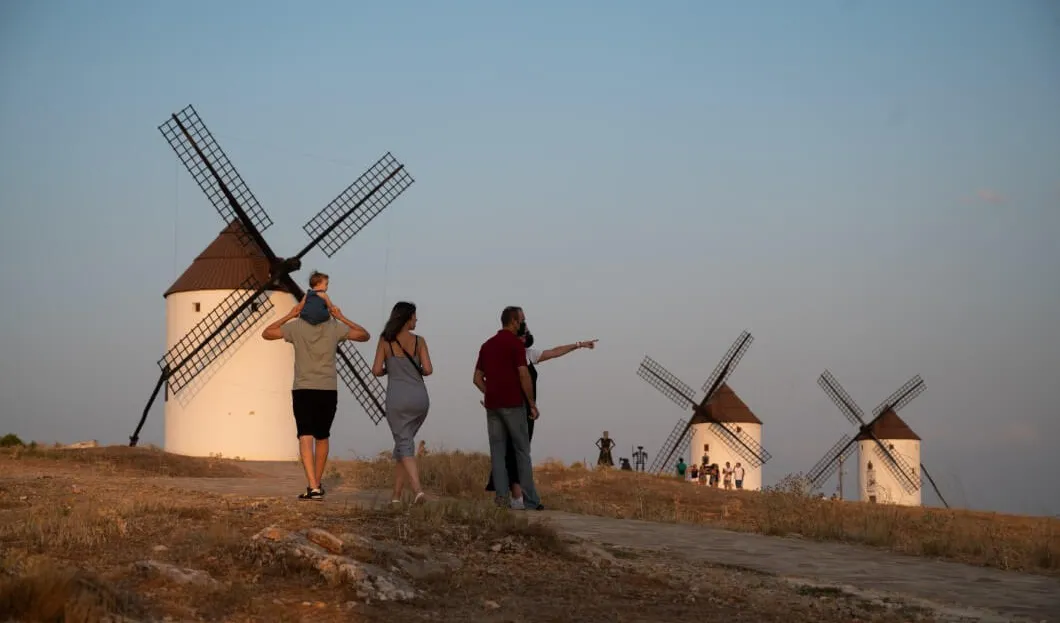
Last July, 4.4 million tourists arrived to Spain, 78% more than last year, but almost 55% fewer than in July 2019, before the COVID-19 pandemic began.
This year’s figures do not look promising either. Between January and July 2021, 9.8 million international visitors entered Spain. The figure is even below the 13.2 million welcomed in July 2020 and is 80% lower than the 47.9 million the year before. “The ‘Covid’ passport designed by the EU has been of no use. The expected confidence that a single document would provide for traveling between countries has not been achieved. On the contrary, each country has set its own rules, which has caused a lot of uncertainty and has significantly harmed us,” says Carlos Abella, secretary-general of Mesa del Turismo, Spain’s tourist board.
The restrictions of each country have reshaped the visitors’ profiles. For example, British and German visitors, who were historically the most numerous, have been surpassed by the French. 874,189 French tourists visited Spain in July, accounting for 19.9% of the total arrivals and recording a 46.6% increase compared to July 2020. Germany, now in second place, added 707,331 visitors (64.5% more than in 2020) and the United Kingdom 555,183 (6.5% more, although the borders were almost closed).
The industry is now making a bittersweet assessment of the situation. “Domestic tourism has performed very well, exceeding the pre-Covid levels, especially in beach destinations. It has even made it possible to save the summer season, but it does not compensate for the dip in international tourism”, admits Abella.
Hostelería de España, a Spanish hotel business association, agrees with the assessment. “The situation has been uneven. Overall, an important recovery is seen compared to 2020, and some areas show numbers higher than in 2019, but the turnover remains on average between 20 and 30% below that of 2019.”
The Balearic Islands is one of the communities where the recovery has been very noticeable, to the point that 30% of international tourists who traveled to Spain in July chose the destination. Francina Armengol, the Balearic president, met yesterday with the main tourist representatives of the archipelago and highlighted that the islands already has 66% of the total visits that arrived in 2019. The Balearic Government makes a moderately positive assessment of this season’s data, despite the fact that some businessmen, such as the CEO of Melià Hotels, Gabriel Escarrer, state that this has been a “terrible” year compared to the one before the pandemic.

The hoteliers of the islands are asking for action to be taken to address turismo de borrachera (“drunk tourism”), which is not profitable and damages the reputation of the archipelago, especially in some parts of Mallorca and Ibiza. “We must rethink the tourism model that we want,” said Escarrer after the meeting with Armengol.
By arrivals, the second most visited destination was Catalonia with 814,310 international tourists, 86.4% more than last year.
Moreover, the reactivation of tourism resulted in a decrease in unemployment. In August, the number of jobseekers registered in public employment services fell by 2.42% compared to July, with 82,583 fewer job applicants, according to the Ministry of Labor and Social Economy. Compared to August 2020, the fall was 12.33% (468,899 fewer unemployed).
According to the ministry, unemployment fell in all industry sectors except construction. The most important decrease was in the Spanish service industry (46,224 fewer jobseekers), which is heavily dominated by tourism and accounts for 13% of jobs.
The government has set the goal of welcoming almost 45 million foreign tourists for 2021; roughly half the figure reached in 2019, when Spain was the second most visited destination in the world.









